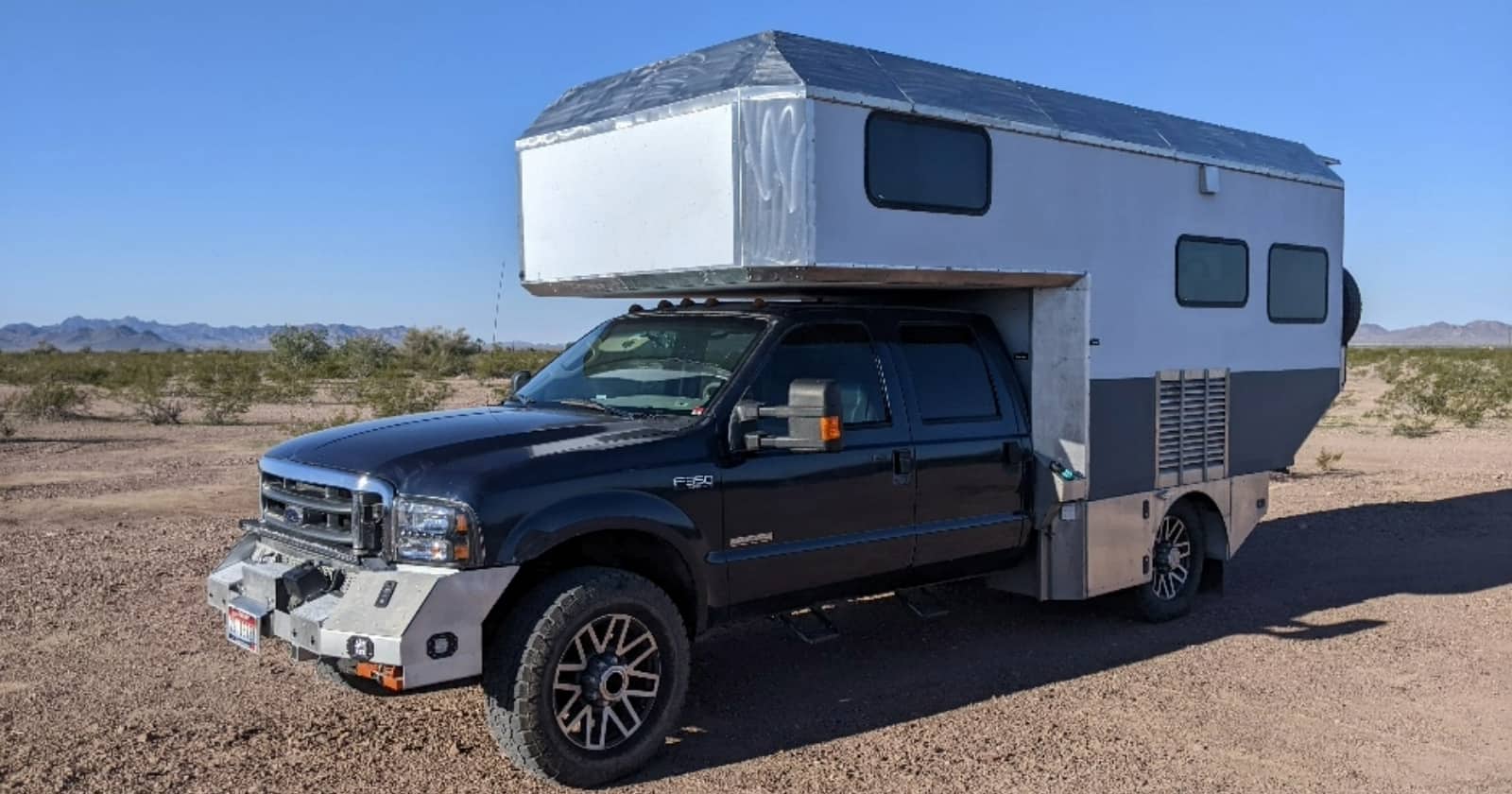Creating an RV ramp can significantly enhance the accessibility and convenience of your RV, particularly for those with mobility challenges, pets, or simply a preference for a smoother entry. This guide will walk you through the process of constructing a durable and safe RV ramp, a perfect DIY project for those who spend extended periods in their RV and seek a practical alternative to traditional RV stairs.
Building a ramp for your RV requires thoughtful planning and careful selection of materials, ensuring that the ramp is robust enough to support human weight safely. While the task may seem daunting, akin to more complex than simpler woodworking projects like birdhouses or flower boxes, with the right guidance, constructing a sturdy and reliable RV ramp is entirely achievable. Let’s dive into the steps to create your own RV ramp, enhancing your RV experience.
Will the RV Ramp Be Strong Enough?
When constructing a ramp for an RV, safety and durability are paramount. It’s essential to eliminate the risks associated with stairs, ensuring that the ramp doesn’t introduce new hazards. While this article won’t provide engineered drawings, it’s crucial to realistically assess the span and height requirements for your ramp. Constructing a ramp capable of supporting one or two people is a manageable task.
Given that the ramp will typically need to be around 36 inches wide to accommodate wheelchairs, creating a sufficiently strong structure is quite feasible. Once your ramp is completed, it’s important to test its stability. If you notice any springiness or swaying, this indicates that additional support is necessary to ensure the ramp’s safety and longevity.
What Are the Best Materials To Use?
For building an RV ramp, wood is a popular and practical choice, especially for those with basic carpentry skills. It’s versatile and relatively simple to work with. However, consider the ramp’s weight if it needs to be moved frequently. Use pressure-treated wood for durability and protect it with exterior-grade paint or stain. Ensure fasteners are stainless steel or galvanized to prevent rust. Place pads under any wood legs to prevent ground contact and decay.
Alternatively, aluminum is a lightweight option and is often available in kits for easy assembly and disassembly, making it ideal for a portable ramp. This material is particularly suitable for those who prefer a less labor-intensive construction.
How To Build a Ramp for an RV
To design an effective and safe ramp for an RV, accurate calculations of its length and height are essential. The height of the ramp is determined by the vertical distance from the ground to the RV’s entrance. The length of the ramp will vary based on the available space and specific requirements.
For wheelchair accessibility, the Americans with Disabilities Act (ADA) recommends a slope ratio of 1:12 for ramps. This guideline suggests that for every inch of vertical rise, there should be at least 12 inches (one foot) of ramp length. However, this ideal ratio might not always be feasible depending on the space constraints and the design of the RV setup. In such cases, running the ramp parallel to the RV, rather than extending it directly out from the doorway, can be a more practical solution.
If the entrance to your RV is 20 inches above the ground, following the 1:12 ratio would result in a ramp that is 20 feet long. This ratio can be adjusted if the ramp is primarily for pets or for people who are walking. It’s important to note that individuals who use wheelchairs should assess the ramp’s slope to ensure it meets their specific needs for safety and accessibility. The steeper the ramp, the more challenging it can be to ascend and descend, especially for manual wheelchair users.
Building a Wooden Ramp.
Building a ramp for an RV with 2×6 lumber, for example, involves several key steps to ensure both strength and safety. Here’s a condensed guide based on common building practices:
Main Structure
Use 2×6 boards for the main structure. Run three of these boards along the entire length of the ramp – one on each outer edge and one in the center. If the ramp is narrower, like for a pet, the center board may not be necessary. The angle of these boards at the top and bottom will depend on the ramp’s length and height.
Fastening
Floor joist hangers are useful for attaching these pieces securely. You can also use a variety of brackets designed for corners and angles.
Ramp Surface
The ramp’s surface can be made from decking boards or sturdy plywood sheeting, at least 1/2″ thick. If you opt for boards, leave a small space between them for water drainage, but ensure the gaps are not so wide as to hinder wheel movement.
Top Platform
It’s often beneficial to have a platform at the ramp’s top. Building this first to the required height and width and then attaching the ramp to it is usually the easiest method. Construct a square frame with 2×6 or 2×8 lumber, and use 4×4 or 6×6 posts for the legs at each corner.
Support
Inside the square frame, install floor joists, ideally spaced every 16 inches but no more than 24 inches apart for optimal support and stability.
The build featured in the clip below is for a residential setting, but the process of how to build a ramp for an RV is essentially the same. Depending on the height and type of use, you will want to consider a raised edge or railings.
Using Aluminum Ramp Kits
Using ramp kits like Roll-A-Ramp® can be a convenient and efficient alternative to building a ramp from scratch, especially if you need a portable or temporary solution.
Here are some key points about using such kits:
- Ease of Assembly: Ramp kits typically come complete with all necessary components and clear instructions. This means there’s no need for calculating measurements or selecting lumber, simplifying the construction process.
- Portability: These kits are designed to be lightweight and easy to disassemble, making them ideal for situations where the ramp needs to be moved or stored when not in use.
- Appearance: While highly functional, ramps made from these kits might have a more industrial or temporary look compared to custom-built wooden ramps.
- Customization and Aesthetics: In contrast, wooden ramps offer more options for customization and can be designed to blend in with existing structures, giving them a more integrated and finished appearance.
Both options have their advantages, and the choice between a pre-made kit or a custom-built wooden ramp will depend on your specific needs, such as the intended duration of use, the need for portability, aesthetic preferences, and whether the ramp needs to fit specific dimensions or styles.
Wrap Up
When building a ramp for your RV, you have two main options: constructing a custom wooden ramp or using a pre-assembled kit like Roll-A-Ramp®. Wooden ramps are great for a permanent setup, offering a natural look and the ability to customize. Pre-assembled kits, on the other hand, are ideal for their portability and ease of assembly, suitable for those who require a more temporary solution. Remember to prioritize safety and stability in your design.
For additional advice and tips, consider joining RV forums like iRV2, where you can connect with fellow RVers, share experiences, and get insights specific to RV living and modifications. This community can be a valuable resource for personal stories, practical advice, and shared knowledge from experienced RV enthusiasts.



